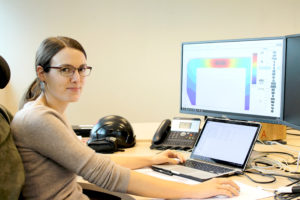#nexolife
Specifying a sound system for your hospitality business is a daunting prospect, bearing virtually nothing in common with choosing hi fi or AV for use in your home. Audio experts will warn you off so-called ‘consumer and prosumer brands’ because their components are not designed to cope with continuous everyday use in bars, restaurants and clubs. Yet purpose-designed professional audio products confuse the layman with obscure terminology, and so many different models that it’s hard to know where to start.
No longer! NEXO is pleased to bring you this simple guide to planning your sound system installation. Not only that, but our Engineering Support Division offers a bespoke modelling service, which will design a system for your venue completely free of charge. One of our team, Carole Marsaud, who has 400 designs under her belt, from bars and hotels to national football stadia, highlights some essential considerations to get you started.

“The very first thing to decide is the purpose of your sound system,” writes Carole. Will it play background music, will there be a DJ? Do you want people to dance, or do karaoke, or sip expensive wines to a Burt Bacharach soundtrack?
“And will that purpose, and that level, be the same throughout your venue?” she asks. What the audio business refers to as ‘zoning’, which allows you to play music louder in some areas whilst maintaining a background level in others, is one of the key advantages of a professionally specified sound system.
Different countries impose different regulations, but they nearly all have them when it comes to sound pressure levels (SPLs) which are the measurement of loudness. There are two aspects to consider. The SPLs inside, which affect your customers and your staff, and the SPLs outside, which affect your neighbours. “SPLs outside are most commonly generated by subwoofers,” says Carole. “When subs are on the floor, the sound is propagating via surfaces, so we can moderate the effect by reducing the contact between the loudspeaker and the surface.”
Which brings us neatly to the subject of positioning loudspeakers. “The main goal is coverage,” says Carole. “When it comes to professional loudspeakers, there are essentially two families: line source and point source. Line source is not really relevant to this discussion unless your venue has a live stage: point source is the choice for 95% of our hospitality customers.”
Where you can put the cabinets is determined by which model you choose, and that in turn is decided by a/how loud you want the system to be, and b/how much low end you want in the system.
Very small loudspeakers, like NEXO’s ID Series, tend to have smaller drivers: in the case of the ID14, a tiny 5” cube, there is just a 4” driver in there, although it is capable of outputting 116dB of SPL. Contrast that with a P8, which has a 8” driver and output of 129dB, and remember that the bigger drivers produce more bass or low end.
“Using ID14s, you could allow 3 metres maximum between speakers,” says Carole. “With the ID24, that would increase to 4 or 5 metres. It would also be 4 or 5 metres for the P8 cabinets, but you’d get more low end. And it would go up to 6 metres for the P10 and P12.”
And yes, ceiling height also has a part to play. “Bigger speakers won’t work well with low ceiling heights, regardless of how much you’d like more low end.”
Which is where the subwoofers come in. NEXO makes a great variety of subs, so you can choose according to size of cabinet, size of driver (10”, 12”, 15”, 18”) or size of budget. But your primary criterion is what do you want it to do. If you’re looking for a club vibe, then 15” or 18” is the choice. If you want to boost the bass response of your ID Series system, there is a versatile 10” partner subbass, which is small enough to be installed in the ceiling space where no one will notice it, perfect for a discreet full-range background music system.
We have to talk about amplification, says Carole, which will be a significant item on your invoice. “With NEXO, you can go down one of two roads. Using NEXO processors (DTD), you will be able to use another brand of amplifer. But don’t dodge using the NEXO processors: they provide the protection for the speaker, against overheating or an ill-judged overload by your DJ. No NEXO processing means no warranty repair if something goes wrong.”
For larger, more complicated systems, using more channels or multiple zones, the NXAMP amplifiers are easier to install. Although they carry a significant price tag, they usually work out to be more economical than buying multiple DTD processors.
Carole and her colleagues in the NEXO Engineering Support Department will design a system for you. All you have to do is send her accurate drawings providing the true dimensions of the room(s) plus a list of your objectives for your venue. “I use NEXO’s proprietary modelling software to propose a solution for you, absolutely free of charge.” NEXO advises users to pass that design to an installation company to implement the audio alongside other technology, such as video screens and lighting.
















































